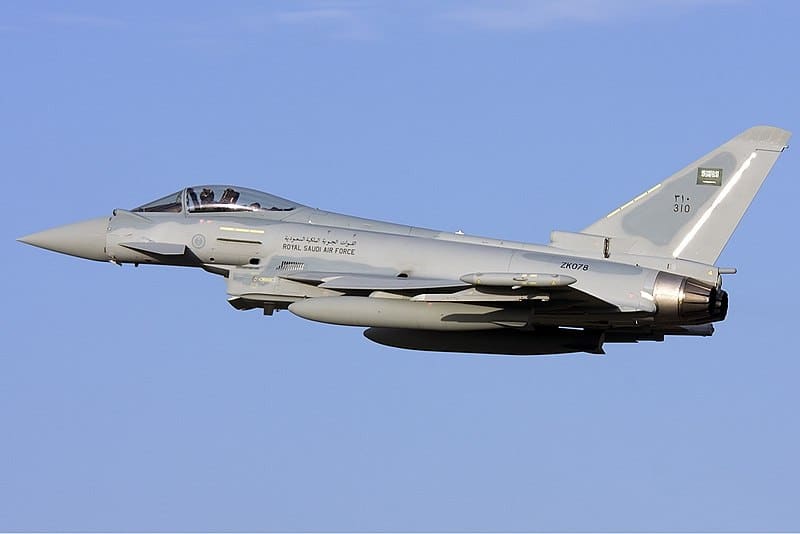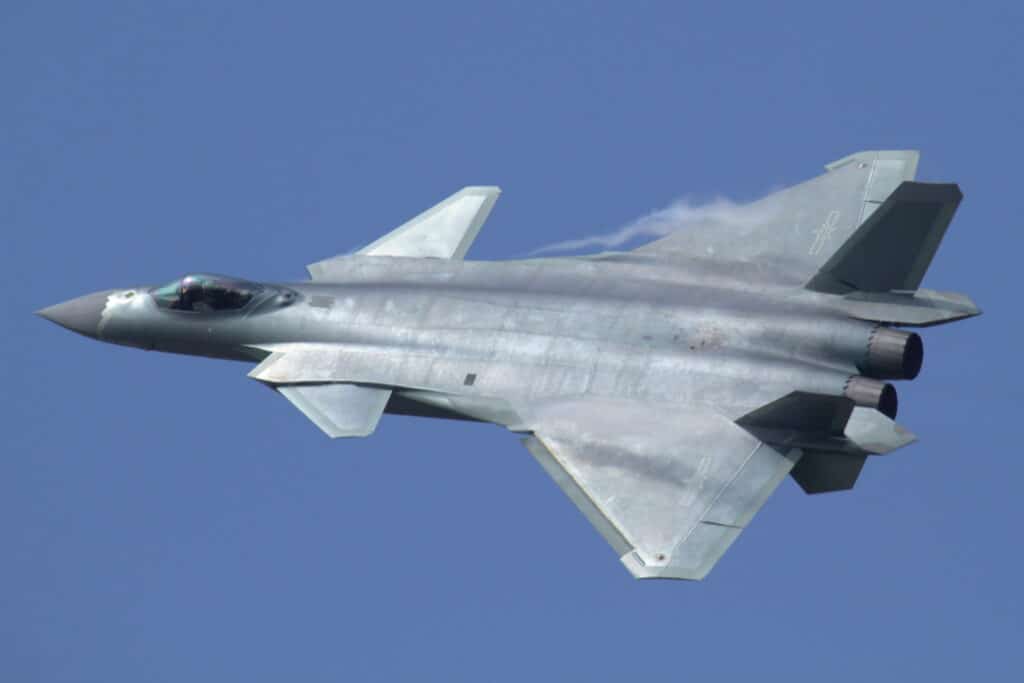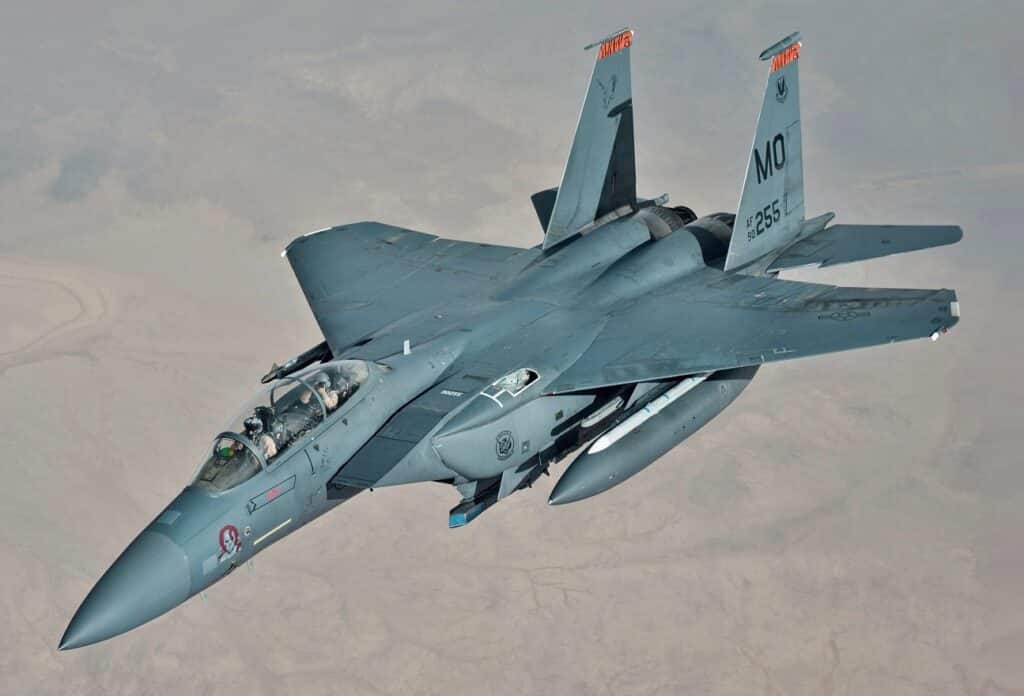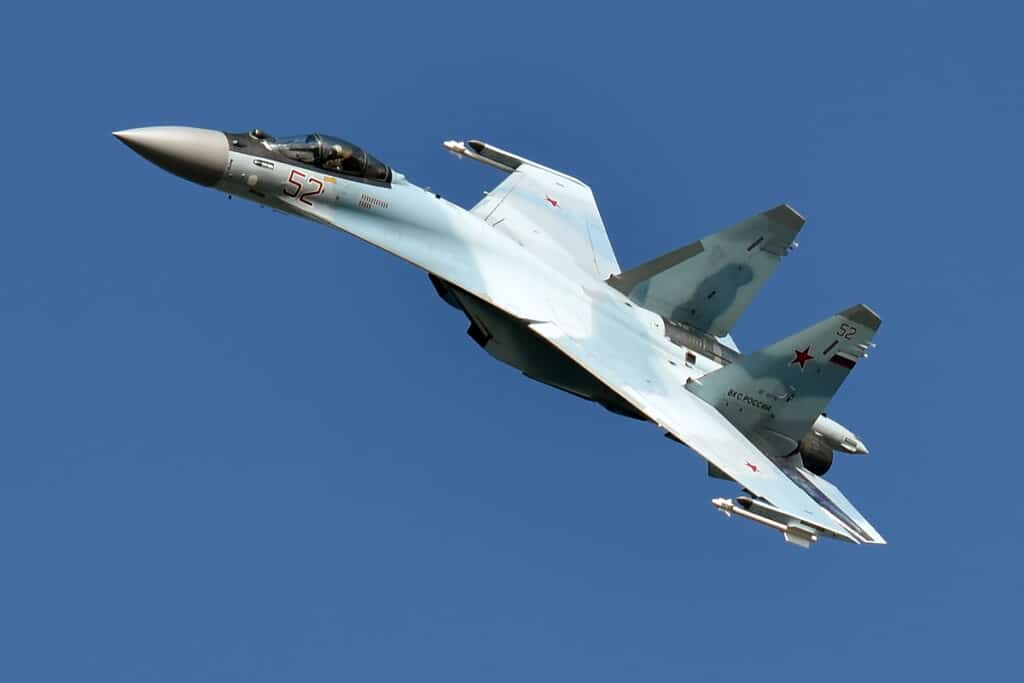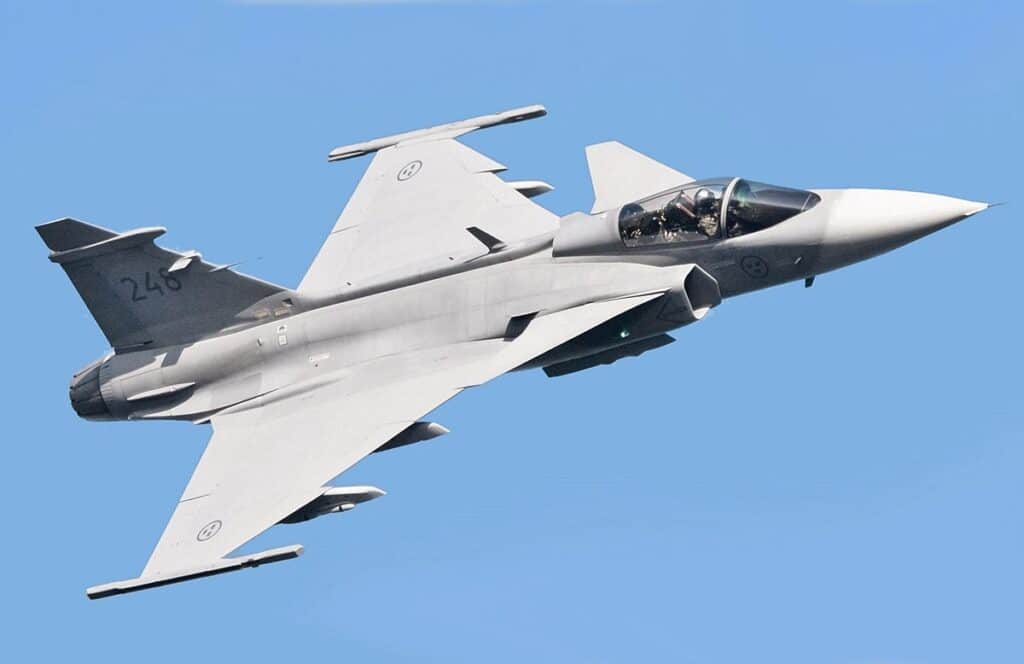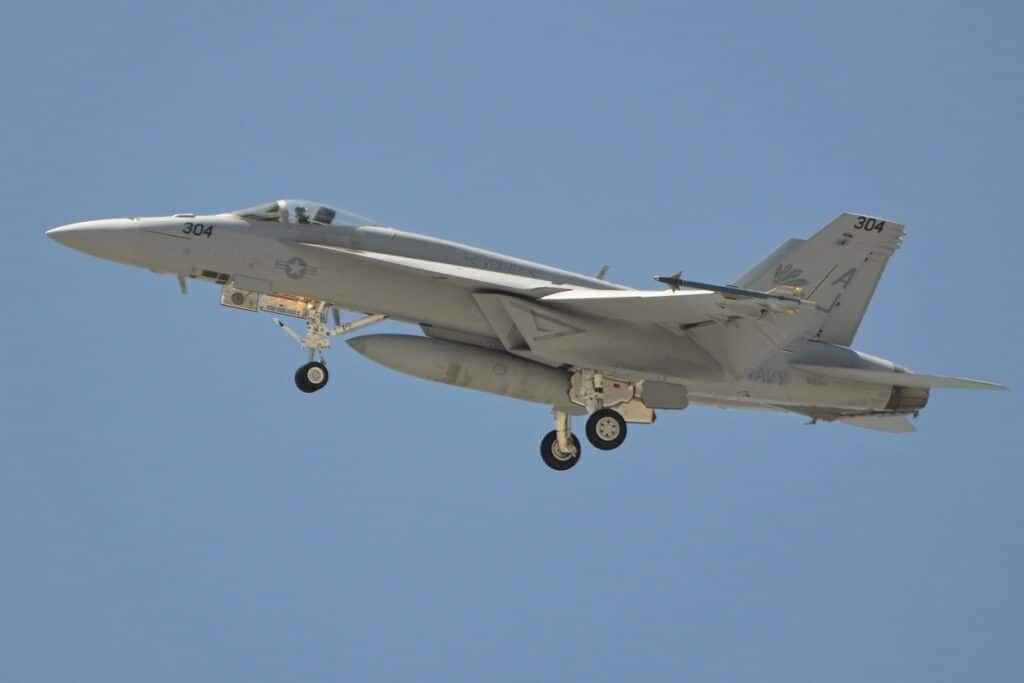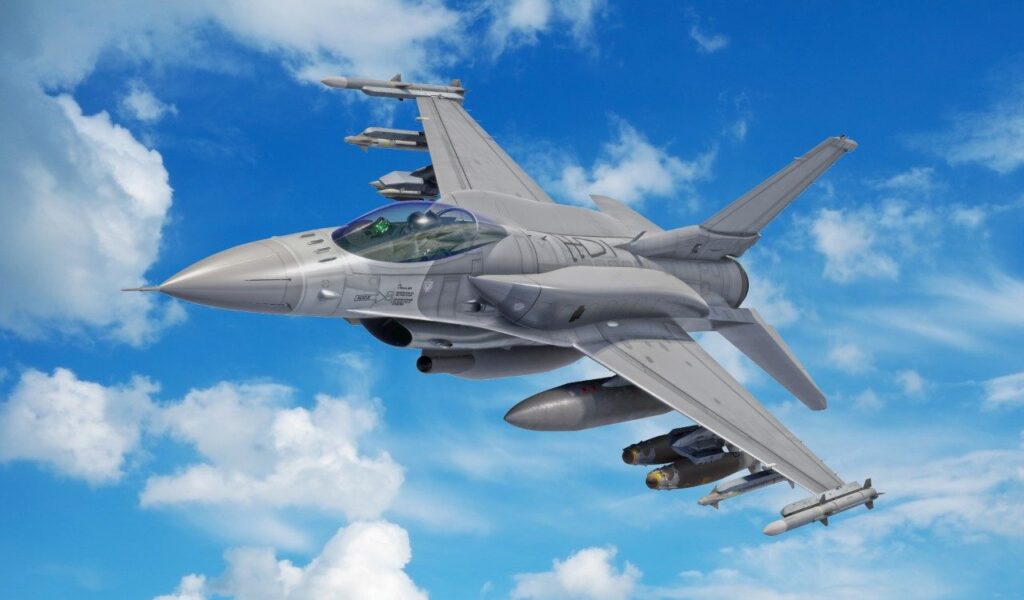Aviation
10 Most Expensive Fighter Jets In The World
Fighter jets are an important part of any country’s defense. Most countries employ the best fighter jets in the world. Few countries have developed the most advanced fighter jets, ranging from 4.5 to 5th generation stealth fighters.
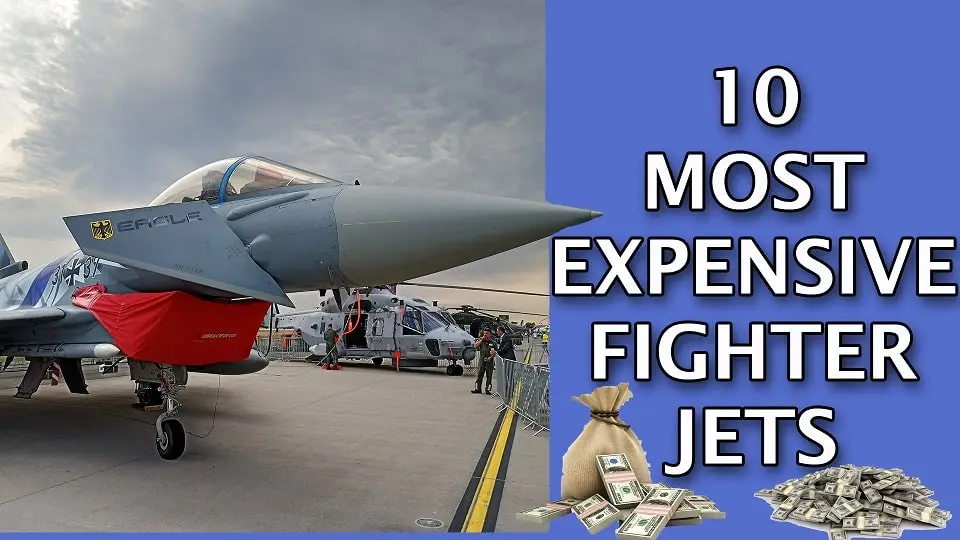
Fighter jets are an important part of any country’s defense. Most countries employ the best fighter jets in the world. Few countries have developed the most advanced fighter jets, ranging from 4.5 to 5th-generation stealth fighters. In this article, we will go over each of the fighter jets and their prices.
1. Lockheed Martin F-35B and F-35C
The most powerful fighter jets are the F-35B and F-35C, despite the fact that their cost has reduced significantly in recent years. They all share little more than 30% of the parts, therefore improving the production of one has an impact on the other.
The less-priced F-35C is the plane model, while the more expensive F-35B is equipped for short take-off and vertical landing (STOVL). The projected price of the F-35B is $135.8 million (Rs 1,024 crore), and the estimated price of the F-35C is $117.3 million (Rs 8,84 crore). This variant is limited to 7 g, whereas The F-35C is limited to 7.5 g.
Fighter jets are important military equipment. Fighters with many of the latest technologies are also a reflection of a country’s military strength. In addition to updated fighter jets, highly skilled and experienced fighter pilots are also indispensable. Fighter pilots have long been known for their intelligence, independence, integrity, courage, and patriotism.
If we want to express our gratitude to them, a military challenge coin with a prototype fighter jet and the name of the pilot is the perfect gift. These challenge coins are of exquisite quality and durable and can commemorate this great honor forever. Welcome to GS-JJ to learn more about military coins.
2. Eurofighter Typhoon
It is a twin-engine, multi-role aircraft, with the first series being made available in 2003. Another European fighter jet that can cost up to $50 million to buyers in the European Union, the Eurofighter Typhoon is the most technologically advanced swing-role combat aircraft in the world. However, the export price is substantially higher.
In 2018, Airbus would have sold India up to 138 million euros worth of Eurofighters, which is still less than what was spent for Rafales. The most recent versions of the Eurofighter and Rafale are Tranche 4 and F3-R, respectively. The fighter jet’s simultaneous air-to-air and air-to-surface capabilities are deployable. The Estimated cost is $124 million (over Rs 930 crore).
3. Dassault Rafale
The most potent fighter jet in France, the Dassault Rafale, is among the best and most potent in the world. The French government has produced about 237 Rafales. In its airbase, India owns 26 Rafale aircraft, almost four years after India and France signed an intergovernmental deal to purchase 36 of the aircraft for Rs 59,000 crore, the first batch of the five Rafale planes arrived in India. India increased nearly the price of a single Rafale, which was roughly Rs 1,638 crore ($115 million), by paying that much (over Rs 862 crore).
4. Chengdu J-20
It is a single-seat, multipurpose fifth-generation stealth fighter. The J-20 is not for sale because China has never meant to export its primary weapon. The Shenyang FC-31, a fifth-generation fighter jet with a price that is currently unknown but estimated to be approximately $100 million (750 cores) may be made available to the worldwide market in the very near future.
5. McDonnell Douglas F-15E Strike Eagle
The F-15EX, its most recent variation, provides evidence of this. Although it is less expensive than the more sophisticated 5th generation aircraft, it is anticipated to replace the previous C and D models and offers best-in-class payload, range, and speed. Because the aircraft is more expensive than the F-35A, this accessibility is mostly caused by operating costs.
However, The Strike Eagle has been deployed for military operations in Iraq, Afghanistan, Syria, and Libya, among others. During these operations, the strike fighter has carried out deep strikes against high-value targets and combat air patrols, and provided close air support for coalition troops. . The F-15EX is an appealing aircraft for many nations because of the F-15. It will cost an average of $87.7 million (over Rs 652 crore).
6. Sukhoi Su-35
The Sukhoi Su-35 is the designation for two improved derivatives of the Su-27 air-defense fighter. They are single-seat, twin-engine, super maneuverable aircraft, designed by the Sukhoi Design Bureau and built by the Sukhoi.
The Su-34 and Su-30 (as well as their numerous versions) are more than twice as affordable as the Su-35, despite the Su-33 and Su-37 not being for sale. This explains why Russia has had trouble finding a buyer for this aircraft, and while some nations are allegedly interested – aside from China and Egypt, which have already purchased some – the Su-30 and the estimated cost of $85 million(Rs 637 crore).
7. Saab JAS 39 Gripen
One of the least expensive new 4 or 4.5-generation combat fighters on the market is the Swedish JAS 39 Gripen, C, and D variants, which are light single-engine multirole fighters produced by the Swedish aerospace manufacturer Saab AB. A single aircraft may cost as much as $30 million.
The latest JAS 39 generation was projected to cost more than $100 million in 2012. Only recently has Saab been able to lower the price, and as a result, the Gripen is once again a sought-after aircraft on the global market. This fighter jet’s estimated price is $85 million (over Rs 637 crore).
8. Lockheed Martin F-35A
The most expensive weapon system ever, and while Lockheed Martin has managed to lower the cost of a single ready-to-use F-35A to less than $80 million, that cost is just the top of it. The newest American jet has some of the most expensive running costs in the world, making it relatively inexpensive to purchase but extremely costly to operate. $77.9 million( Rs 577 crore) was the estimated cost.
9. Boeing F/A-18E/F Super Hornet
Major avionics and weapon system upgrades are included in the most recent F/A-18 modification, the Block III configuration. The Super Hornet’s price also increases, but it brings it into step with the newest generation of 4.5 fighters.
The EA-18G Growler, the most expensive model of this aircraft, is too specialized to be compared to standard fighter jets even though it can be outfitted with both air-to-air and air-to-ground weapons. The estimated price of this fighter jet is $67.4 million (over Rs 502 crore).
10. Lockheed Martin F-16 Block 70/72
Meet the F-16 Block 70/72, the newest and most technologically advanced F-16 with brand-new features based on the cutting-edge F-16V configuration. It offers a new airplane structure with a 50% longer lifespan than the F-16s produced previously.
The F-16 was developed to be a more maneuverable, lightweight, and cost-effective jet fighter than the F-15. The most modern models are quite expensive, but the earlier ones cost roughly $30 million each, which is less than the vast bulk of modern fighters.
A top-of-the-line jet based on the venerable F-16 fuselage is anticipated to cost $64 million (over Rs 480 crore)which gives an idea of how much they may cost from the price of a single F-16 Block 70 aircraft.
More check-out sections of the tags.
best fighter jet in the world, best fighter jets in the world, best fighter jets, best fighter jet, most advanced fighter jets, the best jet fighter in the world, top ten fighter jets, best American fighter jets, best jet fighters, most powerful fighter jet, most advanced military aircraft.

Aerospace
India is set to build a central command for the Air Traffic Control system, called ISHAN

India’s air traffic growth has led to increased responsibilities for air traffic control. The Airports Authority of India (AAI) is considering centralizing air traffic control for aircraft, dividing the country into four regions. The goal is to consolidate India’s segmented airspace into a single entity to improve air traffic management (ATM) efficiency, safety, and smoothness.
Recently, the AAI invited expressions of interest to develop a detailed project report for the Indian Single Sky Harmonized Air Traffic Management (ISHAN) initiative in Nagpur. Under this plan, air traffic controllers in Nagpur would handle domestic flights flying above 25,000 feet, eliminating the need for coordination among controllers in different regions.
For domestic regional flights operating above 25,000 feet, control would shift to the central command in Nagpur. This consolidation aims to enhance airline operations, increase flight handling capacity, and reduce congestion and flight times for passengers.
Currently, the AAI provides ATM services over Indian airspace and adjoining oceanic areas, covering over 2.8 million square nautical miles. This airspace is divided into four flight information regions (FIRs) in Delhi, Mumbai, Kolkata, and Chennai, along with a sub-FIR in Guwahati.
FIRs are responsible for providing air traffic services, including weather information, visibility, and search and rescue assistance. The proposed unification under the ISHAN initiative aligns with the projected growth of the aviation industry, which anticipates a doubling of domestic passenger traffic by 2030.
Aviation
Airbus is set to increase the production rate for the A350 as demand surges

Airbus SE is set to boost production of its advanced A350 widebody jet as it capitalizes on rising demand for long-distance travel and wide-body aircraft, amidst the ongoing crisis affecting its competitor Boeing due to issues with the B737 Max.
The surge in orders for Airbus’s A350 aircraft has instilled confidence in the company, prompting them to ramp up production rates. This move is particularly advantageous as Boeing continues to grapple with production quality issues surrounding its 787 and 777x aircraft.
In 2024 alone, Airbus has received 137 orders for the A350, signaling a need to expand manufacturing capabilities to meet customer demands. With 1,277 orders received and 592 aircraft delivered as of April 2024, Airbus is poised to fulfill pending deliveries efficiently.
The European aircraft manufacturer announced plans to increase production of A350 jets to 12 per month by 2028, surpassing earlier projections aiming for 10 per month by 2026. This decision was disclosed alongside the company’s first-quarter figures.
The Asian market is proving lucrative for the A350, with significant orders from airlines like Indigo and Air India, totaling nearly 70 aircraft commitments for the future. Meanwhile, Airbus is progressing with its A220 and A320 programs, aiming for a monthly production rate of 14 and 75 aircraft, respectively, by 2026. Additionally, the long-range A321XLR is anticipated to commence service in the third quarter of the current year.
In contrast, Boeing has been compelled to scale back production due to regulatory pressures aimed at enhancing factory processes. While Airbus anticipates a positive market outlook, Boeing continues to face challenges with FAA certification and quality approvals, resulting in ongoing delays for its 737 Max and 777x models.
Financially, Boeing reported a significant cash burn of $3.9 billion in the first quarter, leaving it with $7.5 billion in cash and short-term securities by the quarter’s end, down from $16 billion at the beginning of the year. Consequently, Boeing’s stock has plummeted by 38% in the year so far, contrasting with Airbus’s 14% gain, marking Boeing’s lowest performance in over a year.
For a full listing including details on customers and regions, as well as historical data for the previous year, go to the download section below.
- March 2024 deliveries: 63 deliveries to 32 customers
- March 2024 gross orders: 137
- 2024 deliveries to date: 142 deliveries to 45 customers
| Single-Aisle | A300/A310 | A330 | A340 | A350 | A380 | TOTAL | |
|---|---|---|---|---|---|---|---|
| Total Orders | 19470 | 816 | 1774 | 377 | 1277 | 251 | 23965 |
| Total Deliveries | 11705 | 816 | 1598 | 377 | 592 | 251 | 15339 |
| Aircraft in Operation | 11007 | 271 | 1482 | 202 | 591 | 234 | 13787 |
Aviation
All passengers killed in plane crash, after pilot let his children to control the plane

When boarding a plane, passengers entrust their safety to the skilled hands of the pilot. However, tragedy struck when one of the flight ended in disaster as all passengers lost their lives in a horrific plane crash.
In 1994, during a flight from Moscow to Hong Kong, tragedy struck as an Aeroflot relief pilot made a fateful decision. In a move that would have devastating consequences, the pilot invited his own children into the cockpit to play with the controls. Little did anyone know, this seemingly innocent gesture would lead to the loss of all 75 lives aboard the aircraft.
It was a seemingly innocent act that led to catastrophic results. The relief pilot, Mr. Kudrinsky, invited his two children, Yana, 12, and Eldar, 15, into the cockpit during the late hours of the night. Little did anyone know, this simple gesture would set off a chain of events that would end in tragedy.
Once in the cockpit, the children were allowed to sit in the captain’s chair and play with the controls, unaware that they should have been disabled as the plane was in autopilot mode.
Eldar, perhaps in a moment of curiosity or innocence, held the control column down for a mere 30 seconds. Yet, in those brief moments, the autopilot disengaged, thrusting the aircraft into manual control.
By the time the pilots regained their seats and attempted to regain control, it was too late. Despite their efforts to pull the plane out of a dive, they overcorrected, causing the flight to climb almost vertically, ultimately stalling it.
Final moment Flight 593 crash
In the final moments, as the pilots struggled to stabilize the aircraft, Flight 593 crashed into the Kuznetsk Alatau Mountain range in southern Russia, completely obliterating the plane and claiming the lives of everyone on board.
Investigations revealed a chilling truth: there was no evidence of technical failure. Instead, the crash was attributed to the unthinkable decision to allow inexperienced hands to manipulate the controls of a commercial aircraft.
The black box recording captured the harrowing sequence of events, providing a grim reminder of the human cost of a lapse in judgment. In just over two minutes, the lives of all on board were tragically short, leaving behind a legacy of sorrow and unanswered questions.

